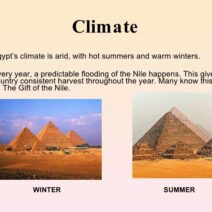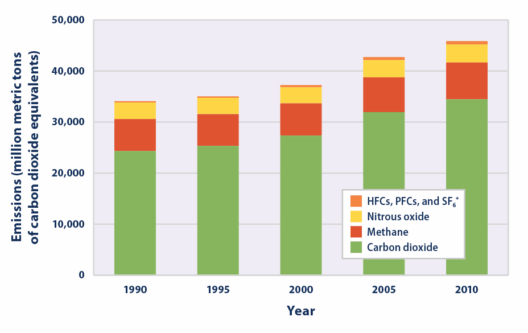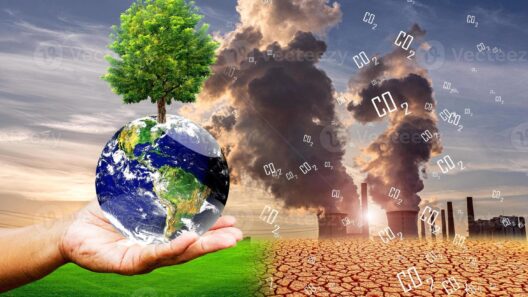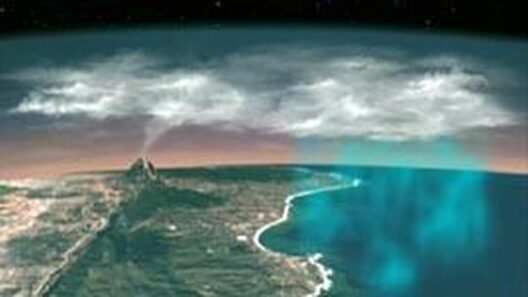Defining the Crisis: Finding the Best Description of Global Warming
The global climate crisis has increasingly cemented itself as an undeniable reality. As we confront the palpable consequences of rising temperatures, it prompts us to ask: Is global warming merely a statistic, or can it be framed as a narrative akin to a thrilling adventure? This article endeavors to explore the intricacies of global warming, delving into its definitions, implications, and potential pathways for resolution.
Understanding the Lexicon of Climate Change
Before we can tackle the essence of global warming, we must parse the lexicon surrounding climate change. Terms like “greenhouse gases,” “carbon footprint,” and “anthropogenic impacts” pepper conversations about our planet’s predicament. Yet, how do these terms collectively encapsulate the enormity of the threat we face?
Global warming refers specifically to the long-term increase in Earth’s average surface temperature due to human activities, primarily fossil fuel combustion, which emits greenhouse gases into the atmosphere. By contrast, climate change encompasses a broader spectrum of environmental shifts, including altered precipitation patterns, sea-level rise, and intensified weather extremes. This distinction is vital; when discussing climate, we must not underestimate the nuanced connections between global warming and its wider repercussions.
However, the terminology alone doesn’t capture the profound emotional and existential stakes involved. Framing global warming solely as a scientific issue neglects the deep-seated implications it has for biodiversity, human survival, and socio-economic stability. Thus, while defining the crisis, we must transcend dry definitions and consider the vivid realities they represent. Could we challenge ourselves to think of global warming not as a static state but as a dynamic story continuously unfolding around us?
Chasing the Variables: The Science of Global Warming
To fully grasp the complexities of global warming, we must explore its causal factors and consequences. The science is grounded in thermodynamic principles, where greenhouse gases trap heat within the Earth’s atmosphere, leading to an exacerbation of warmer temperatures. This warming instigates a cascade of events: glaciers and polar ice melt, ocean waters expand, and ecosystems experience stress.
The Intergovernmental Panel on Climate Change (IPCC) has crystallized these insights through a series of comprehensive assessments. Each report presents alarming evidence: rising sea levels threaten coastal cities, altered precipitation patterns challenge agriculture, and more frequent extreme weather events intensify humanitarian crises.
Yet, while these scientific findings are alarming, they often settle into a narrative of despair. But what if we could interject a sense of hope? What if understanding our planet’s changing climate incited not only fear but also curiosity and commitment? This duality presents a profound challenge to recognize and embrace—how do we balance the daunting realities of scientific data with a proactive framework for solutions?
Intersection of Policy and Individual Action
The intersection of policy and individual action represents another critical dimension in defining the global warming crisis. Governments worldwide grapple with implementing effective climate policies that embody both scientific recommendations and socio-economic viability. International agreements like the Paris Accord illustrate the commitment nations must undertake to mitigate greenhouse gas emissions collectively. But despite these diplomatic efforts, the efficacy of policies can vary widely, revealing the limitations of political willpower.
However, individuals also wield significant power in catalyzing change. Personal actions, from reducing energy consumption to advocating for sustainable practices, can accumulate into a collective force. Movements have emerged, galvanizing community engagement and urging demands for systemic change. Yet, the challenge remains—how do we inspire individuals to consider their contribution as part of a larger collective effort against a colossal existential threat? Can we encourage a paradigm shift where personal responsibility merges seamlessly with global advocacy?
Imagining a Sustainable Future: Envisioning Solutions
As we define global warming, we simultaneously embody our aspirations for the future. Embracing a narrative built on resilience and innovation rather than despair is paramount. It is essential to envision the transformative possibilities that a commitment to sustainability can yield. Renewable energy, for instance, presents a beacon of hope in our quest for carbon neutrality. Transitioning from fossil fuels to solar, wind, and geothermal power may hold the key to arresting temperature rises.
Moreover, rethinking our approach to consumption and waste can have substantial implications. Circular economy principles—such as reducing, reusing, and recycling—offer robust frameworks for minimizing environmental impact. Educating younger generations about ecological stewardship can foster a culture of responsibility and enthusiasm for sustainable practices.
In conclusion, navigating the existential crisis of global warming requires a comprehensive understanding of the myriad factors affecting our planet. Definitions must encompass not only scientific rationales but also the emotional narratives emerging from our shared experiences. By fostering a dialogue that embraces both urgency and optimism, we can collectively harness our potential for change and march toward a more sustainable future. So, when we ponder the question: What does global warming mean to us? Let us not merely settle for a definition; rather, let us engage in the adventure of defining our relationship with the planet we call home.







